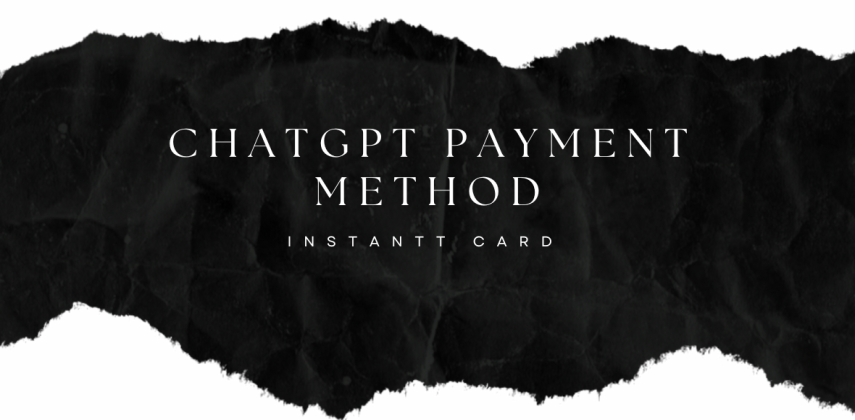







People use ChatGPT for lessons, drafts, code, research, and quick planning. Still, many run into card errors when upgrading to ChatGPT payment methods, or adding a method for the OpenAI API. our Cardwisechoice Virtual Mastercard helps in the most common cases: currency mismatch, regional limits, missing 3-D Secure, or cautious bank filters on U.S. online merchants. Setup takes only a few minutes, and renewals generally process on time each month.
Good to know: PSD2 3-D Secure is widely enforced across the EEA, and OpenAI supports those checks. Using our card with 3DS2 typically improves approval rates and reduces soft declines.
Important update – Payment for the OpenAI API is supported. As of May 27, newly issued Cardwisechoice cards are credit Mastercards and work for OpenAI API billing.
Virtual card adoption is rising across subscriptions and developer tools. Strong customer authentication and network tokenization (Visa/Mastercard) are part of the reason approval rates with modern virtual cards can outperform many domestic-only debit cards.
✅Stripe friendly: Not every card clears Stripe due to risk rules or chargeback patterns. This is a common reason some bank cards fail at the ChatGPT checkout. Our Cardwisechoice uses BINs that test well on Stripe and meet gateway requirements, including programs associated with Sutton Bank. Results can vary by region and bank settings, but users typically report smoother approvals than with domestic-use cards.
✅BIN – 537100
✅Country – USA
✅Card type – Credit
✅Issued by – U.S. bank
✅Billing address – USA
✅Scheme/Network – Mastercard
✅Bank – Sutton Bank
ChatGPT is a conversational tool from OpenAI used for writing, coding help, research summaries, translations, and brainstorming. Teams connect it through the OpenAI API; individuals choose ChatGPT Plus for faster responses and priority access during busy hours.
Since launch, it has become a daily helper for freelancers, teachers, students, marketers, and developers who want quick, reliable support without digging through multiple sources.
There’s a free tier (generally GPT-3.5). It can be slower and occasionally limited during peak demand. For consistent performance and access to GPT-4, many users upgrade to ChatGPT Plus, typically around $20/month in most regions.
Plus provides faster replies, better availability at peak times, and earlier access to new features. Students, teachers, and professionals who rely on it daily often find the upgrade worthwhile.
OpenAI accepts major credit and debit cards—Visa, Mastercard, and American Express. Charges are in USD, and the system supports 3-D Secure (3DS2) when banks require it.
Some domestic-only cards struggle with international USD charges or recurring SaaS transactions. That’s why users in countries such as India, Vietnam, Algeria, or Brazil may see “payment failed” or “card declined.”
For the OpenAI API, the same networks apply. Developers can store multiple cards in the OpenAI billing dashboard and choose a default for usage charges.
Yes. If your bank blocks cross-border charges, our Virtual Mastercard or Visa is a practical alternative.
These cards support 3-D Secure, use USD billing, and work well for online subscriptions like ChatGPT Plus or the OpenAI API.
In some regions, you may also see Apple Pay or PayPal, but OpenAI primarily bills cards directly. A widely accepted virtual card tends to be the most consistent option across countries.
Many users ask about “chatgpt plus payment options without credit card.” A simple path is a prepaid or virtual debit card that supports USD and 3DS2. With Cardwisechoice, you can create a Virtual Mastercard funded by crypto (USDT, BTC) or other reload methods, so you don’t need to link a bank-issued credit card..
Steps:
Create an account with a virtual card provider that supports 3-D Secure.
Generate a USD-based Virtual Mastercard.
Load at least $25 to cover the subscription and potential taxes/fees.
Open chat.openai.com → Upgrade → enter your virtual card details.
Most of our users receive a confirmation email right away, and this approach works even where traditional cards are limited for online use.
When upgrading to ChatGPT Plus or paying for API usage, you might see a few common messages. Here’s what they usually mean:
✅Payment failed — Often currency/region or 3-D Secure related. Use a USD virtual card with 3DS2 and keep a small balance buffer.
✅Card declined — Issuer blocked the merchant category (U.S. SaaS). Try our card known to clear U.S. subscriptions.
✅Verification needed — Complete the 3-D Secure challenge (push/app/SMS). If you closed the prompt, retry so the challenge can reappear.
✅No confirmation email — Check spam and the email on your OpenAI account. You can also review your OpenAI billing dashboard.
If issues persist, remove the old card, add a fresh Virtual Mastercard, and try again. For renewals, keep a bit more than $20 to cover taxes or FX drift.
Quick fix: Cardwisechoice Virtual Mastercard with 3-D Secure and USD billing typically resolves the above issues and keeps both ChatGPT Plus and OpenAI API payments moving.
Register with your email and complete basic checks. You’ll see your wallet, card controls, and transactions in the dashboard.
Choose the USD Virtual Mastercard for OpenAI billing. Your card number, expiry, and CVV appear in the dashboard. 3-D Secure is supported if a challenge is required.
Top up in USDT, BTC, or other available methods. Keep a small buffer above the expected monthly charge for taxes or regional fees.
Open chat.openai.com → Upgrade → enter your Virtual Mastercard. If you see a 3-D Secure prompt, complete it. The upgrade reflects after authorization clears.
Developers can add the same card in OpenAI billing. This keeps usage-based charges flowing as projects scale.
OpenAI’s risk controls consider region, currency, and 3DS support. Many generic virtual cards use narrow BIN ranges that see more soft declines on U.S. SaaS merchants we focuses on.
In practice, that means fewer declines, steadier renewals, and less time contacting your bank. For freelancers and small teams that depend on ChatGPT daily, consistency matters more than shaving a few cents off fees.
chatgpt plus payment methods openai brazil: Many cards default to BRL and fail on USD merchants. A USD virtual card avoids currency mismatch and 3DS friction.
chatgpt plus subscription payment methods algeria: Cross-border limits are common. A funded Virtual Mastercard can pass international authorization where local cards do not.
openai chatgpt plus payment methods vietnam: Ensure 3-D Secure is enabled; a USD virtual card often improves approval for OpenAI charges.
chatgpt plus annual payment option japan: Some domestic cards restrict U.S. recurring payments. A 3DS-enabled USD virtual card can resolve soft declines and renewals.
Strong Customer Authentication applies. If your bank blocks cross-border SaaS, a Virtual Mastercard with 3DS2 can help payments clear cleanly.
Where bank rails are tight or acceptance is narrow, crypto top-ups give a straightforward path for ChatGPT and OpenAI API billing.
Users often search: how to pay for chatgpt plus payment methods, openai chatgpt update payment method, how to change payment method chatgpt, and chatgpt plus change payment method. Here’s a quick approach:
If you run into a verification step, complete the 3-D Secure challenge. API users should repeat the update in the OpenAI billing portal.
Many people ask about chatgpt plus payment options without credit card. Our Virtual Mastercard is funded upfront—via crypto or other methods—so there’s no traditional credit line. It works like a prepaid/debit product for online use, which suits students, teachers, and anyone who prefers a fixed spending cap.
Some also ask about chatgpt plus payment methods apple pay. Apple Pay support varies by region and merchant setup. When wallets aren’t available, a virtual Mastercard with 3-D Secure offers a similar level of convenience—without exposing your primary bank card in online forms.
Searches like chatgpt plus yearly payment are common. Annual billing reduces the chance of mid-month failures from small balance gaps or tax changes. Monthly is more flexible; either way, keeping a small cushion above the fee helps renewals run on time.
| Plan | Best for | Setup | Reload | Notes |
|---|---|---|---|---|
| Standard Virtual Mastercard | Individuals, students, teachers | Low issuance fee | Approx. 2–3% | USD-based; 3-D Secure; suited for ChatGPT Plus |
| Crypto-Funded Virtual Mastercard | Freelancers, creators, devs in cash-restricted regions | Modest issuance fee | Approx. 1–2% | USDT/BTC reloads; fast top-ups |
| Business Virtual Mastercard | Agencies, startups, SMBs | From mid-tier | ≈1% | Multi-currency controls; team-level limits |
Exact fees vary by currency, network costs, and region. Check your dashboard for current pricing before loading funds.
Teams often search openai chatgpt payment options and openai chatgpt change payment method subscription. API charges are usage-based, and authorizations can vary. A Virtual Mastercard helps keep projects running by supporting recurring online authorizations, 3-D Secure, and steady USD billing. You can set a card-level spend cap to prevent surprise spikes.
The same Virtual Mastercard can be used where local cards often fail:
This makes your Payment Stack simpler: one controllable card for most online tools you use alongside ChatGPT.